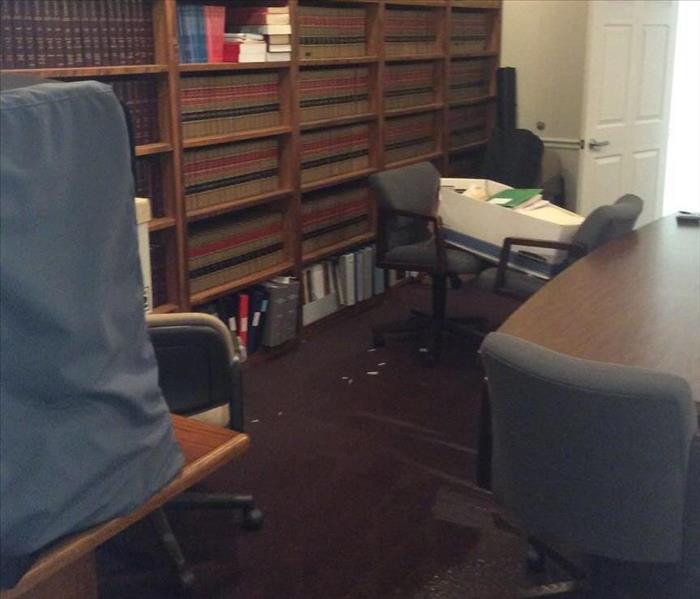What to Do after a Flood in your Home or Business
12/18/2017 (Permalink)
A supply line breaks to a washing machine or a pipe breaks to the water softener. There is standing water in the home or water in the business. What should be done?
Water damage is one of the most serious mishaps that can occur to a property. Water damage requires immediate, professional restoration efforts, in order to avoid permanent damage and potential loss of the property. Within the first 24 hours, water damage that is left to stand can seep into drywall, structural elements and carpeting, causing lasting damage.
Luckily, there are many professional restoration companies that make their living saving properties from water damage. In this article, we'll take a quick look at the restoration process and how property owners should handle a flood damage event, should one occur.
Because so much of the United States has always been built on rivers, near lakes and in areas that experience frequent, severe weather, the U.S. flood damage mitigation industry has developed to be one of the best in the world. Over 100 years of flood damage mitigation has yielded a set of procedures that have been established as the gold standard in flood damage mitigation. There is a five-step process that all but ensures that no lasting damage to the flooded home will occur.
It is imperative to understand that a flooded home is the real estate equivalent of a medical emergency. Time is the most crucial factor. The best possible move that a property owner could make is to call a professional restoration company immediately. The sooner a restoration company can arrive at the flooded home, the more likely mitigation efforts are to prevent any lasting damage.
Once the restoration company's team arrives, they will immediately begin surveying the extent of the water in the home or water in the business. This phase of the water cleanup process generally uses high-tech gadgets, such as hygrometers and infrared water detectors, to establish all of the places that may have been affected by water in the home or water in the business. If there is an active supply line break or a pipe break, the team will locate the fault and remediate it.
Once the extent of the water in the home or water in the business has been established and the location pinned down, the next phase of the water cleanup process can begin.
The next water cleanup phase involves the extraction of all standing water from the premises. Through the use of powerful, specialized pumps, the restoration company's team will be able to remove thousands of gallons per hour from the site. The water cleanup team will use sophisticated vacuum equipment to fully remove all standing water from the premises. At this point, the property may appear dry to the untrained eye. But this leads to the next step.
Now it will be time to begin the final drying of the property. The team will use high-power dryers and dehumidifiers, capable of removing thousands of pounds of water from material and the atmosphere every hour. Drying time may take as little as 30 minutes or as long as an entire day. Completely drying the property is absolutely crucial, as it avoids the formation of serious mold and mildew, and removes water from drywall and structural elements. When the drying process is complete, the home will no longer be at risk of sustaining further damage.
The final step is to chemically sanitize and cleanse the home to prevent mildew formation and eliminate smells.
When a pipe breaks or a supply line breaks, the most important thing you can do is to call in the pros. There's no reason to let a pipe break or a supply line break diminish or destroy the value of your home.
Call us today at (386)754-0261 for more information.




 24/7 Emergency Service
24/7 Emergency Service
